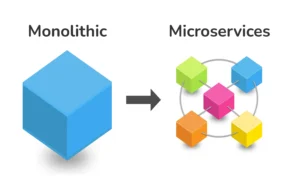Microservices architecture is a modern approach to building software applications. It has gained significant popularity in recent years due to its potential to address some of the challenges associated with monolithic application development. In this comprehensive overview, we’ll delve into the advantages and challenges of microservices to help you understand whether this architectural style is suitable for your project.
Understanding Microservices
Microservices, also known as the microservices architecture, is an architectural style that structures an application as a collection of small, loosely coupled, and independently deployable services. Each service in a microservices-based application serves a specific business function and communicates with other services through well-defined APIs.
Advantages of Microservices
- Scalability: Microservices allow you to scale individual services independently. This means you can allocate more resources to the services that require them, improving overall system efficiency and performance.
- Technology Flexibility: Each microservice can be developed using different technologies, frameworks, and programming languages. This flexibility allows you to choose the best tools for each specific task.
- Faster Development: Smaller, more focused development teams can work on individual microservices. This can accelerate development and reduce bottlenecks, enabling more frequent releases.
- Enhanced Fault Isolation: In a microservices architecture, a failure in one service does not necessarily affect the entire application. Services are isolated, reducing the impact of issues.
- Improved Availability and Resilience: By distributing services across multiple servers or even data centers, you can enhance the availability and resilience of your application.
- Easier Maintenance: Smaller codebases are easier to maintain and debug. Changes in one microservice are less likely to have unintended consequences on other parts of the application.
- Continuous Delivery: Microservices are well-suited for continuous integration and continuous delivery (CI/CD) practices, enabling rapid, automated testing and deployment.
- Resource Efficiency: Microservices allow you to allocate resources (CPU, memory, etc.) based on the specific needs of each service, leading to resource efficiency.
Challenges of Microservices
- Complexity: Managing a system with multiple microservices can be complex. You need robust tools for monitoring, logging, and debugging to handle this complexity effectively.
- Increased Network Overhead: Microservices communicate over the network, which can introduce latency and require careful management to ensure optimal performance.
- Data Management: Handling data across multiple microservices can be challenging. Ensuring data consistency and integrity, as well as managing databases, requires careful consideration.
- Service Discovery and Load Balancing: You need mechanisms for service discovery and load balancing to ensure that client applications can locate and interact with the correct instances of a service.
- Security and Access Control: Security is a critical concern. Each microservice should have its own security mechanisms and access control. Managing these across numerous services can be complex.
- Testing and Integration: Effective testing and integration of microservices can be challenging. Coordinating and maintaining consistency in testing across different services is crucial.
- Operational Overhead: Managing the deployment, monitoring, and scaling of multiple microservices can introduce operational overhead.
- Cultural Shift: Embracing microservices often requires a cultural shift within organizations. Teams must adapt to new practices and communication methods.
Use Cases for Microservices
Microservices are particularly well-suited for applications with the following characteristics:
- Large and Complex: Applications with complex business logic or many features benefit from the modularity that microservices provide.
- Rapidly Changing: Applications that need to evolve and scale quickly can take advantage of microservices’ flexibility and scalability.
- Heterogeneous Technology Stack: When different parts of the application require different technologies or tools, microservices allow for technology flexibility.
- Distributed Teams: If development teams are geographically distributed, microservices can enable each team to work independently on separate services.
Conclusion
Microservices offer a range of advantages, including scalability, technology flexibility, and enhanced fault isolation. However, they also present challenges related to complexity, data management, and security. The decision to adopt a microservices architecture should be based on your specific project’s requirements and constraints.
While microservices can offer significant benefits, they are not a one-size-fits-all solution. The key to a successful implementation lies in understanding the advantages and challenges and making an informed decision based on your project’s unique needs. When executed effectively, a well-structured microservices architecture can result in a more agile, scalable, and maintainable application.






